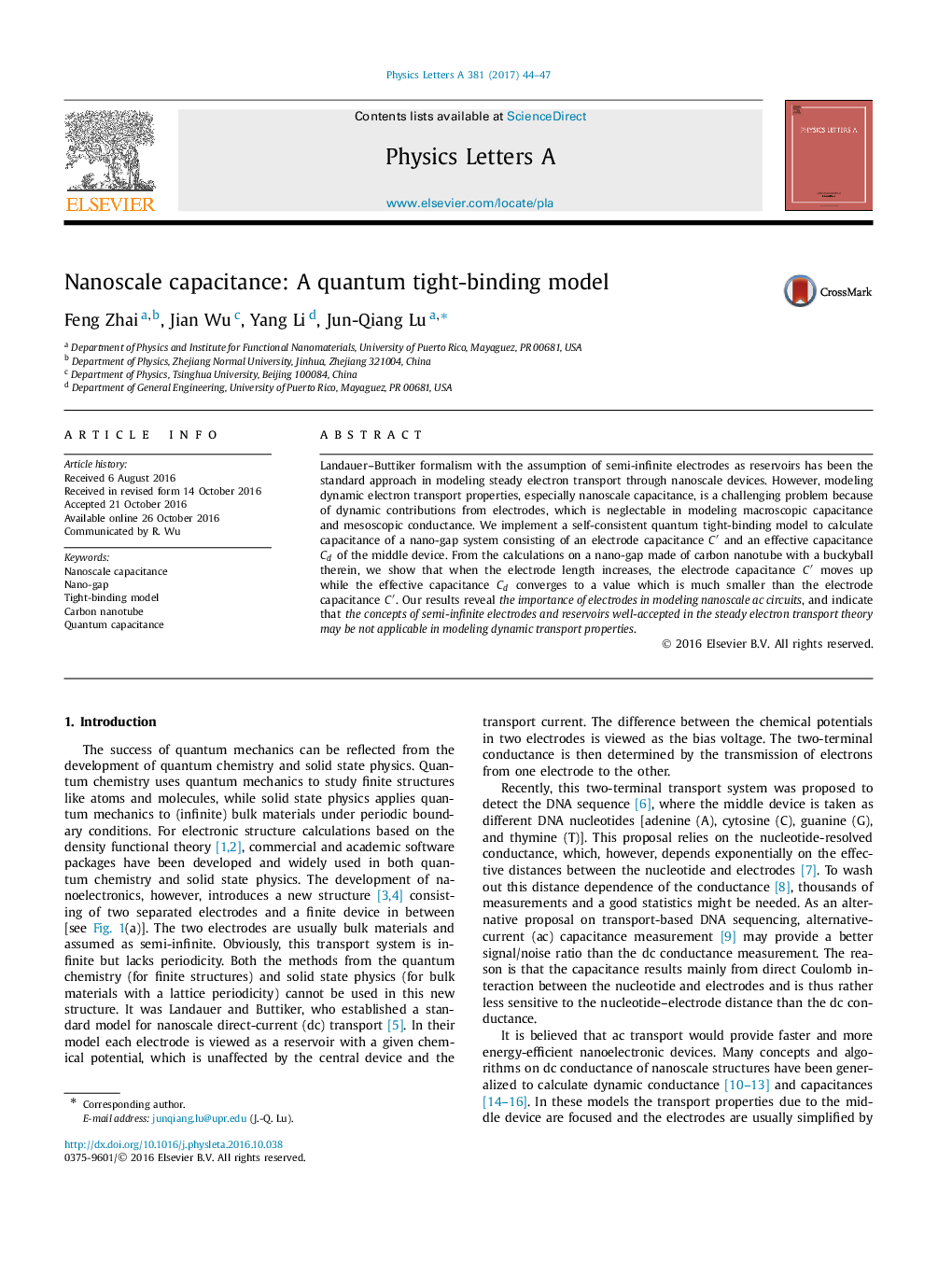| Article ID | Journal | Published Year | Pages | File Type |
|---|---|---|---|---|
| 5496946 | Physics Letters A | 2017 | 4 Pages |
Abstract
Landauer-Buttiker formalism with the assumption of semi-infinite electrodes as reservoirs has been the standard approach in modeling steady electron transport through nanoscale devices. However, modeling dynamic electron transport properties, especially nanoscale capacitance, is a challenging problem because of dynamic contributions from electrodes, which is neglectable in modeling macroscopic capacitance and mesoscopic conductance. We implement a self-consistent quantum tight-binding model to calculate capacitance of a nano-gap system consisting of an electrode capacitance Câ² and an effective capacitance Cd of the middle device. From the calculations on a nano-gap made of carbon nanotube with a buckyball therein, we show that when the electrode length increases, the electrode capacitance Câ² moves up while the effective capacitance Cd converges to a value which is much smaller than the electrode capacitance Câ². Our results reveal the importance of electrodes in modeling nanoscale ac circuits, and indicate that the concepts of semi-infinite electrodes and reservoirs well-accepted in the steady electron transport theory may be not applicable in modeling dynamic transport properties.
Related Topics
Physical Sciences and Engineering
Physics and Astronomy
Physics and Astronomy (General)
Authors
Feng Zhai, Jian Wu, Yang Li, Jun-Qiang Lu,
